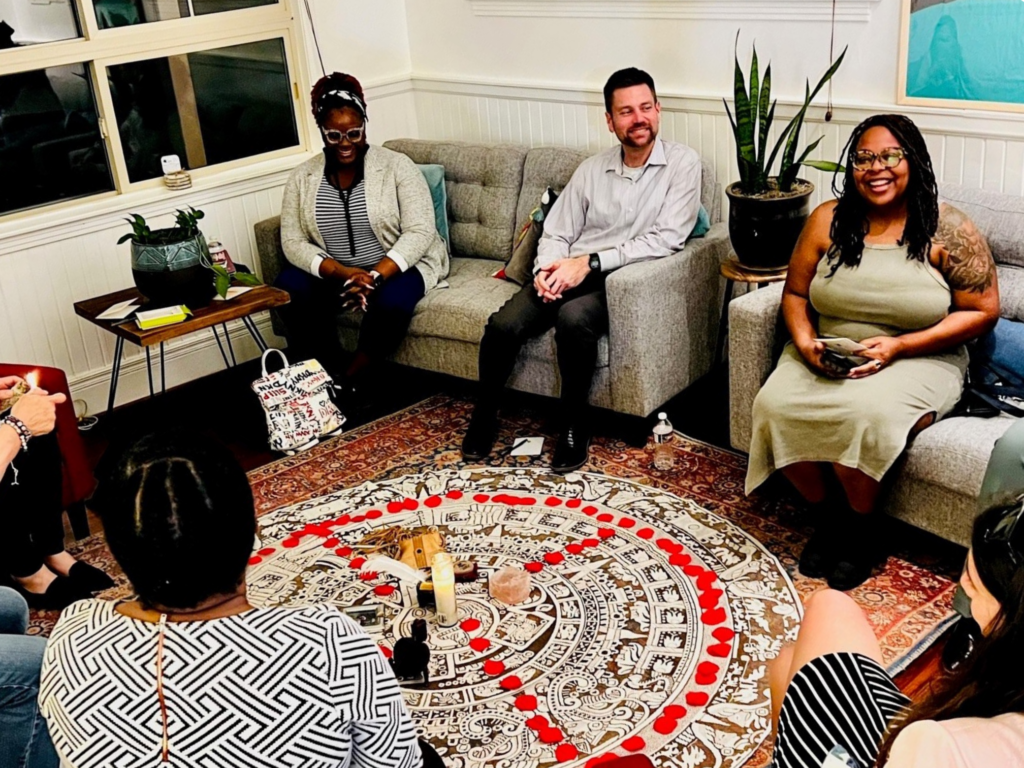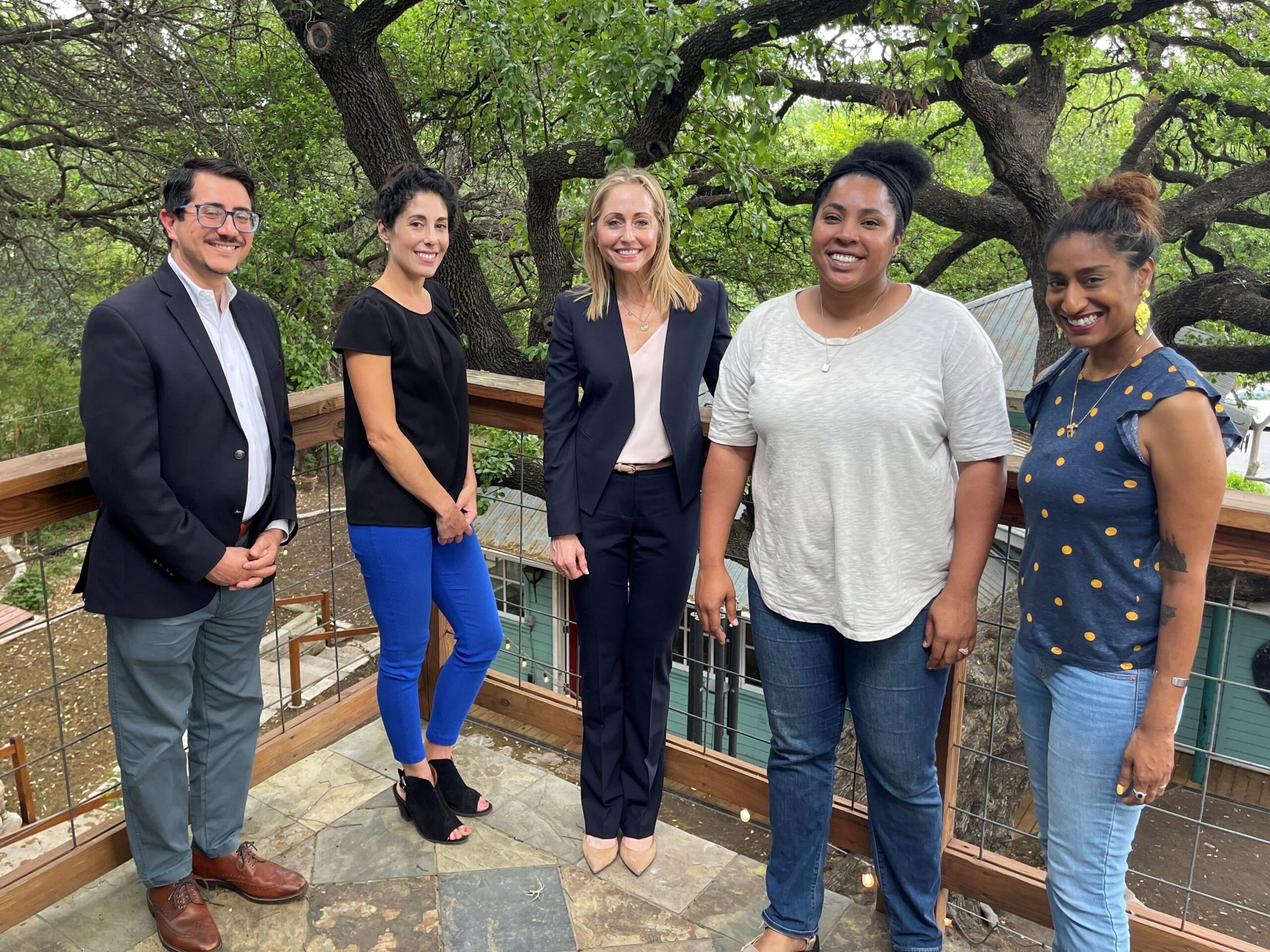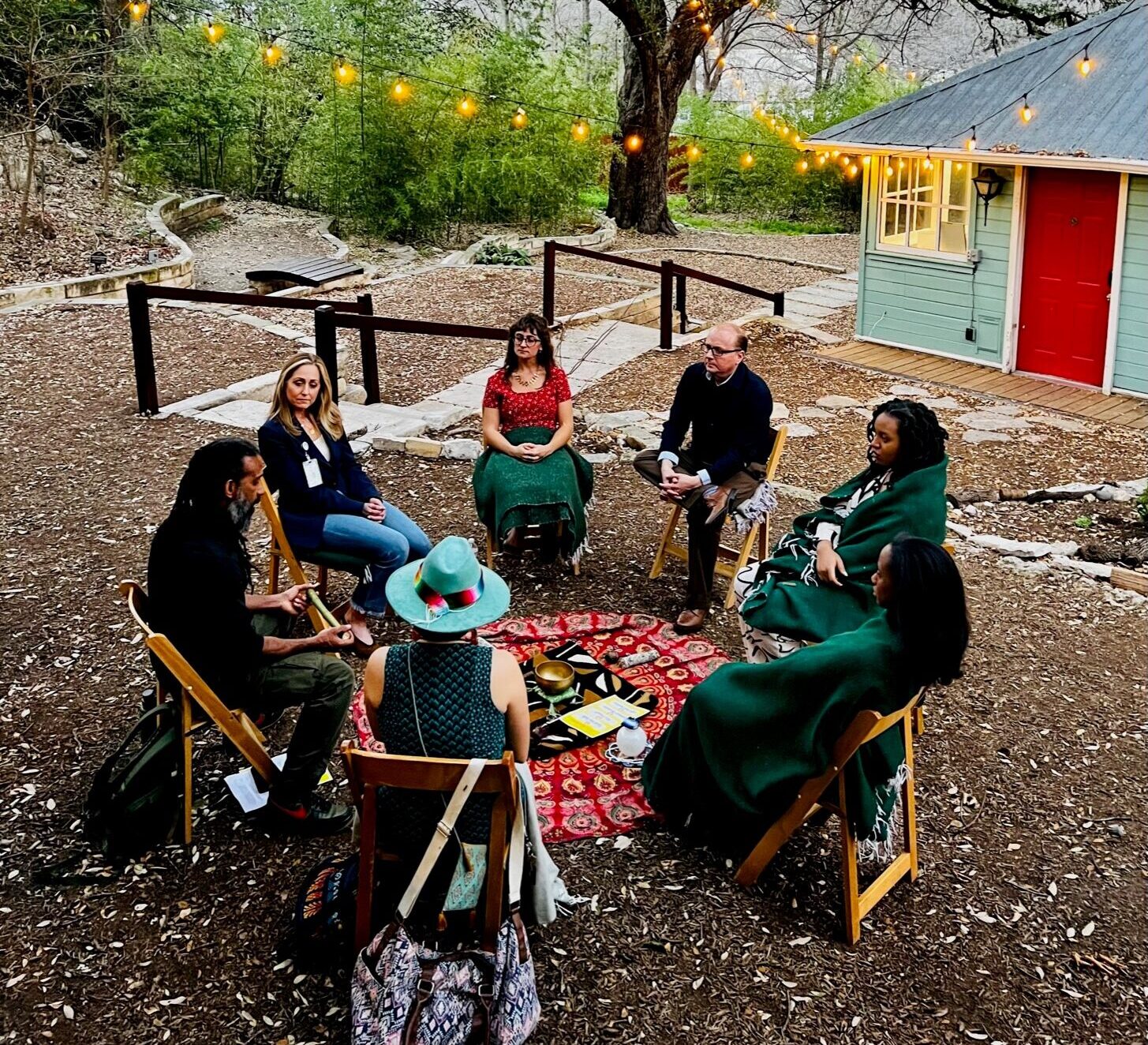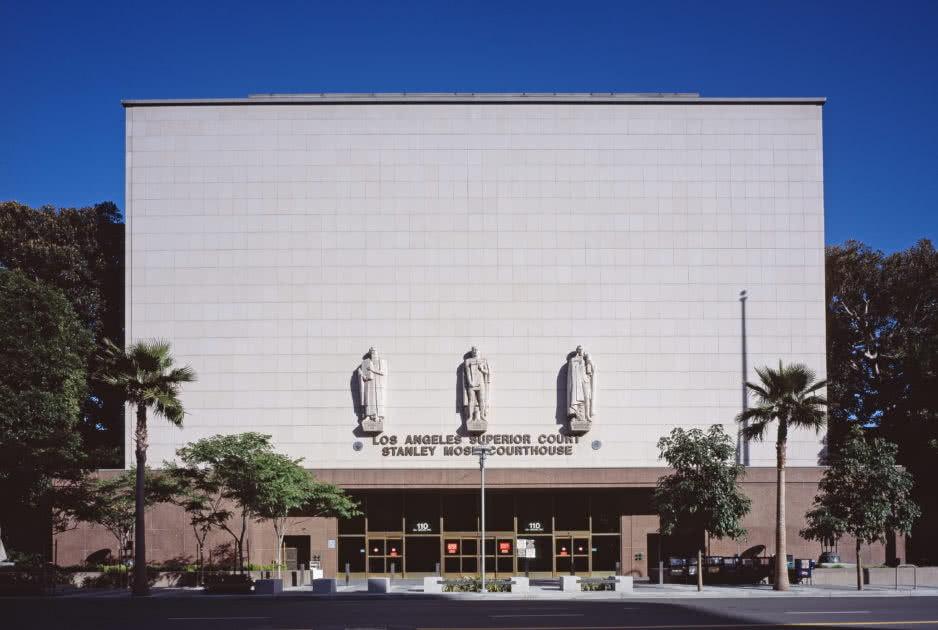Shifting Paradigms From Punitive to Restorative Justice
The Travis County Transformation Project represents a significant shift in justice for young people, focusing on restorative practices rather than punitive measures. Initiated by Travis County District Attorney José Garza, this project is a collaborative effort involving local government and FUSE, a national nonprofit. This case study explores the project’s development, implementation, goals, and early outcomes of this innovative approach to community-based preventative solutions instead of punitive measures through the juvenile justice system.
In the field of criminal justice, fundamental, systemic change often feels like an impossibility. This, coupled with our over-reliance on the practice of incarcerating adolescents, results in too many young people being detained when a more empathetic and ultimately impactful approach is available: restorative justice.
Instead of focusing solely on punishment, restorative justice seeks to address the underlying causes of harm, fostering accountability and promoting meaningful repair. The Travis County Transformation Project is the culmination of these practices, applied through a lens of justice for young people. Restorative Justice is a framework that invites us to move away from punitive measures and towards healing and reconciliation. It centers our actions on repairing the harm caused by involving all stakeholders – victims, persons, and the community – in a collaborative repair process.
This case study describes a pre-arrest, community-based pilot program for 15 to 16-year-olds involved with family violence in the home that provides an alternative to youth detention in Travis County, Texas. This program aims to empower caregivers to actively participate in the pathway that determines if youth go into detention. The goal is to ensure that families have an option for pre-arrest diversion. If they choose, a caregiver can opt for their family to participate in The Travis County Transformation Project – this restorative justice pilot program- as opposed to their child being arrested, detained, and having a criminal record.
The Evolution of Restorative Justice in Youth Criminal Systems
Historically, the youth justice system in Travis County, like many across the United States, has leaned heavily on incarceration and punitive measures for young people. This approach has often been criticized for failing to address the underlying causes of young persons’ delinquency and for contributing to high recidivism rates. In response to these challenges, the Travis County District Attorney’s office sought to implement a program focusing on healing and rehabilitation rather than punishment.
Restorative justice focuses on the needs of victims and the involved community rather than simply punishing the person who committed the crime. Various Indigenous cultures provided the roots for this approach, where concepts of healing, reconciliation, and restoration played a central role in resolving conflicts and addressing harm within communities. However, the 1970s marked the beginning of its modern development as a formal framework.
Around this time, restorative justice started gaining attention as an alternative to traditional punitive justice systems, which were criticized for their focus on punishment rather than addressing the underlying causes of crime and repairing harm. This period saw the emergence of various experiments and programs that applied restorative principles in different contexts. Restorative justice gained international recognition in the 1990s, with various organizations, governments, and justice systems adopting its principles and practices. The United Nations has endorsed restorative justice to address conflicts and promote peace in post-conflict societies.
Restorative justice is characterized by several key principles, including:
- Repairing Harm: focuses on addressing the harm caused by the offense and restoring relationships between the parties involved.
- Inclusive Processes: involves all stakeholders, including victims, persons, and the community, in the resolution process.
- Voluntary Participation: participation in restorative processes is voluntary and based on informed consent.
- Accountability and Responsibility: persons are encouraged to take responsibility for their actions and make amends to the victim and the community.
- Healing and Reintegration: seeks to promote healing for victims and persons and support the reintegration of persons into the community.
Restorative justice has been applied in various contexts, including criminal justice, young person’s justice, schools, workplaces, and community settings. Restorative practices such as victim-person mediation, family group conferencing, and circles have been used to resolve conflicts, prevent reoffending, and promote social cohesion.
Collaborative Design: Travis County DA and FUSE Partnership
The Travis County Transformation Project was spearheaded by District Attorney José Garza, who aimed to develop a community-based program rooted in restorative justice principles to prevent children from entering the juvenile justice system. The project was designed in collaboration with FUSE, which provided expertise through its Executive Fellowship program. Channing Neary, a FUSE Executive Fellow with a background in criminal law and trained restorative justice facilitator, is playing a pivotal role in designing and piloting the project. Her experience in both prosecution and defense provides a balanced perspective that is crucial in shaping the program’s framework.
In Travis County, where the Travis County Transformation Project takes place, between 2010-2020, a plurality of homicides that occurred were attributed to Domestic Violence (DV) related to adults. Scientific research indicates that children who grow up in homes witnessing DV or experiencing Family Violence (FV) will grow up to repeat that pattern in their adult intimate partner relationships either as a perpetrator of the violence or a victim. The offense of assault family violence between caregivers and youth is often the result of intergenerational violence and frequently involves both parties on the receiving end of both physical and emotional harm. Therefore, it can be anticipated that the majority of the young people participating in this program will have been on the receiving end of abuse/violence through “discipline” in homes.
Austin, Texas, is known for its creative approaches to many things. In this case, the leadership at the Travis County District Attorney’s office is applying a specific quality that Austin is known for, innovation, to address a deep-rooted challenge: how to better care for and support young people. With a strong restorative justice vision as its anchor, the Travis County DA’s office, in collaboration with FUSE, a national nonprofit that increases the effectiveness of local governments to build more equitable communities, designed a dynamic pilot program for young people in the criminal justice system. This program allows youth to resolve offenses outside of the formal carceral system while enabling those families involved to feel supported while healing their own intergenerational trauma to hopefully break the cycles of violence in their families.
As the pilot year of the Travis County Transformation Project culminates, 140 youths have been processed through the traditional system on Adult Family Violence (AFV) charges. Fourteen of the processing youths have had 4+ AFV charges since the program launched, and over 50% of them have had prior or additional violence referrals since the program launched. This demonstrates the need for this kind of intervention, which introduces a holistic approach to supporting families with young people.

Repairing Harm, Restoring Connections, Preventing Violence
The primary goals of the Travis County Transformation Project are to:
- Repair Harm: focus on healing the victims and the community by addressing the harm caused by a young person’s offenses.
- Restore Community Connections: reintegrate young people into the community through positive engagements and support networks.
- Prevent Future Violence: implement interventions that address the root causes of family violence and reduce the likelihood of future offenses.
A Multi-Faceted Approach to Youth and Family Engagement
The project targets 15 to 16-year-olds involved in family violence, offering them an alternative to criminalization through handcuffs, detention, and processing through the traditional juvenile justice system. Participants and their families engage in what can potentially be a 9-month engagement with a youth and family advocate and a 10-week circle process that includes:
- Restorative Dialogue: these sessions are designed to address the trauma experienced by all parties, facilitate open communication, and develop conflict resolution skills.
- Peace-making circles include family and community members to hold space for the harm that has occurred and aim to heal unhealthy family dynamics and develop coping mechanisms, emotional intelligence, and conflict-resolution skills.
- Youth and family advocacy services assess the needs of each family member and help connect them to community providers if needed. These services also provide weekly check-ins with the family and advocacy at school. Youth and family advocates also participate in the peace-making circle process.
One of the most commendable aspects of this initiative program that Neary leads is its commitment to empowering communities and amplifying marginalized voices. Restorative justice acknowledges that crime affects not only individuals but also entire communities. By involving community members in the decision-making process, the initiative ensures that justice is not just done but fosters trust and cohesion within neighborhoods and communities. Neary sites, the strength and depth of community partners’ commitment to the program demonstrated a positive impact in its first year.
Neary frames restorative justice as an approach based on the public health practice of harm reduction. This approach not only reduces the burden on an already strained criminal justice system but also addresses the root causes of harm and violence, such as poverty, inequality, and trauma. It is a tested framework used to focus on centering an individual’s unique, contextual needs in the treatment and care provided to them as they move through the justice and, sometimes, carceral process. The youth that enter this program are the kids that will likely later enter the adult system at 17 in Texas. This program is truly an opportunity to get upstream, help the youth and families that need it the most, and keep our community safe by preventing future violent crime.
Neary believes that the successful impact of this program is a result of treating kids like kids as opposed to criminalizing the child in what is, more often than not, a fractured family system that is contributing to the violence that is happening in the home. She described the core tenets of this approach as “empowering the people that the incident happened to be able to sit with it and heal themselves through relationship building and harnessing active listening skills to devise ways for how they will repair any harm that they may have caused.” Restorative justice provides an opportunity for culture to change and then for the systems to follow in accordance with the values shift that is taking place. To center care in this kind of programming for families who are often treated in punitive ways early goes a long way to change the culture around how often and authentically young people are offered an alternative to recidivism.

Public Commitments and Private Partnerships
The project is funded by a $300,000 commitment from the Travis County District Attorney’s office, spread over three years. Additional financial support is provided through private-sector grants. The University of Texas at Austin’s Institute for Law, Society, and Justice is crucial in tracking data and measuring outcomes, ensuring the project’s impacts are rigorously evaluated.
In a significant development, the Travis County Transformation Project was recently awarded $175,000 as a Runner-Up winner in the inaugural Children and Youth Resilience Challenge by the U.S. Department of Health and Human Services (HHS). This grant will provide crucial support for the project’s ongoing efforts to implement restorative justice practices and enhance community integration for young people involved in the criminal justice system.
Measuring Success: Quantitative and Qualitative Indicators
The evaluation strategy involves qualitative and quantitative metrics to assess the program’s effectiveness.
Key performance indicators include:
- Recidivism Rates: tracking the rates at which participants re-offend compared to a control group.
- Participant Satisfaction: surveys and interviews with participants and their families to assess their satisfaction with the program and its perceived effectiveness.
- Community Impact: assessing changes in community safety and cohesion as a result of the program.
The program goal was to serve 30 by the end of the 1st pilot year on June 15th, 2024. As of the end of October 31, 2024, here are some of the salient outcomes:
- To date, the ATX initiative has served 45 families, meaning that 45 youths have been diverted from the youth justice system;
- One young person who had been in the program for about a month and not been participating in services has been arrested since the launch of the program.;
- The average recidivism rate for a youth arrested for AFV within the same time frame is 40-50%;
- The cost of a youth being in the program is about $45.00 per day, while what it costs to confine a youth in detention is around $365.00 a day;
- Many kids and parents that have entered the program have unmet mental health needs, housing, and food insecurity;
- Out of the 45 youths diverted from arrest and detention, only one has been rearrested while engaged in the program, and
- The racial/ethnic makeup in the program to date is 19 Hispanic, 9 Black, three white, and 1 Asian.
Based on direct feedback from those impacted by this program, she believes that participants at each engagement step feel the changes made through a restorative justice approach. Neary believes that the success of this Austin-based pilot program rests in the trust that has been developed between the parents, youth, community partners, and system partners in Travis County. She accredited the community’s willingness to be experimental and to trust in this approach as to why Travis County is experiencing such successful outcomes of this pilot program.
Overcoming Skepticism and Engagement Hurdles
The project faced several challenges, including resistance from those within the justice system who were skeptical of restorative practices. To overcome this, the project leaders conducted educational sessions and workshops to demonstrate the evidence-based benefits of restorative justice. Another challenge was engaging families in the intensive 10-week program. To address this, the project offered flexible scheduling and provided transportation assistance to reduce barriers to participation.
Early Promise: Positive Changes in Youth Behavior and Family Dynamics
While the Travis County Transformation Project is still in its early stages, initial feedback has been positive. Participants have reported improved family dynamics, and preliminary data suggests a reduction in repeat offenses among the cohort. The community has also supported the program, appreciating the focus on rehabilitation over punishment.
Measured Impact:
- Reduced youth violent recidivism from a 50% ten-year average to just 4% in the program’s first year, representing a 92% improvement in youth outcomes
- Successfully placed 4 at-risk youth in stable employment, creating pathways to economic independence
- Provided comprehensive educational advocacy for youth participants, securing appropriate accommodations, preventing expulsions, and ensuring continued enrollment despite disciplinary challenges
- Transformed family dynamics through evidence-based interventions, with families reporting improved communication skills and successful conflict prevention strategies
- Strengthened community-police relations through 80+ collaborative case reviews, documenting a marked shift in law enforcement attitudes toward youth diversion, as evidenced by direct officer testimonials advocating against youth detention
- Achieved 87.5% program eligibility rate across reviewed cases (70 out of 80), while providing resource navigation for non-eligible cases, ensuring no youth was left without support options
- Connected seven families with confidential psychological evaluations outside the justice system, empowering parents with professional documentation to advocate for their children’s needs in educational and workplace settings
- Successfully redirected participating families to community-based support systems rather than law enforcement intervention, demonstrating program effectiveness in reducing system involvement
- Assisted in securing a two-year Step-Up Texas grant funding to institutionalize reform, enabling the hiring of two full-time practitioners to train entire probation department staff in trauma-informed and restorative justice practices
A Model for Reform: Lessons from Travis County’s Restorative Approach
The Travis County Transformation Project is a promising model for reforming young people’s justice through restorative practices. The project aims to reform young people’s lives and enhance community safety and cohesion by focusing on healing and community integration. Continued evaluation and adaptation will be vital to the project’s long-term success and potential replication in other jurisdictions.
In conclusion, the new emphasis on rehabilitation and reintegration in the Travis County DA’s office aligns with the long-term goals of a restorative justice approach, resulting in a safer and more inclusive society. As we reflect on the future of criminal justice, we must prioritize approaches that prioritize healing, reconciliation, and community empowerment. The collaboration between the Travis County DA’s Office and the FUSE Fellowship Initiative is a beacon of hope, showing us that change is possible. By embracing restorative justice, we can build a safer, fairer, and more compassionate society for all.

Learn More
LifeWorks, Austin, Texas
LifeWorks is a fearless advocate for youth and young adults pursuing a life they love and a stable future for themselves and their families. They are committed to innovative problem-solving, shared accountability, and a relentless focus on achieving real, sustainable, and measurable results for the clients they serve.
NYU Center for Violence and Recovery, New York City, NY
The Center on Violence and Recovery (CVR) is dedicated to advancing knowledge on the causes and consequences of violence and trauma, and developing solutions that foster healing among individuals, families, and communities. CVR innovates by developing cutting-edge solutions to promote healing, conducts research on trauma-related issues, and educates through training and workshops.
University of Texas Institute of Law, Justice, and Societies (Initiative for Law, Societies, and Justice), Austin, Texas
The Initiative supports research, education, and capacity-building on policy and practice-relevant issues related to law, societies, and justice. It brings together scholars, students, policymakers, and practitioners to advance research, education, and community engagement on issues related to the criminal legal system.
Excellence Project (Equity & Excellence Project), Austin Area Urban League
The Excellence Project addresses the root causes of the school-to-prison pipeline through prevention, intervention, advocacy, and training. Their mission is to disrupt the relationship between race, schooling, and incarceration, envisioning a world where Black and Brown children are not criminalized in schools.



